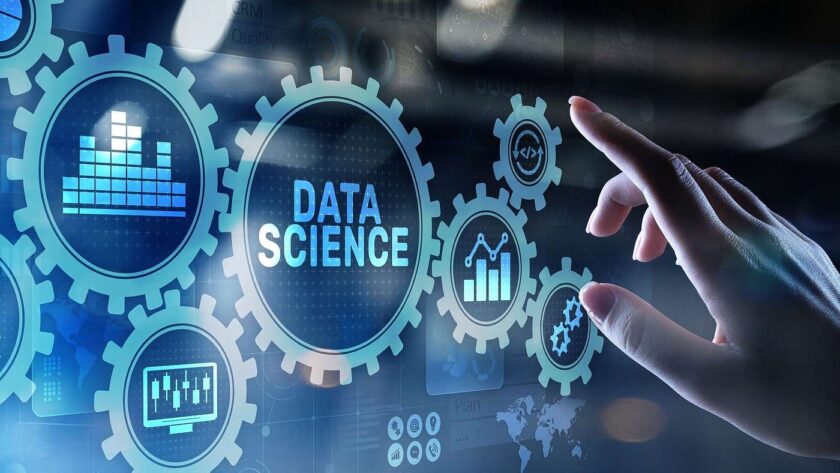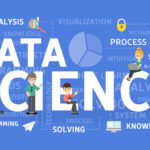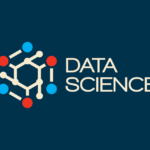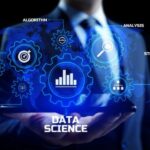The Future of Data Science: Revolutionizing Industries with Big Data, AI, and Machine Learning
Data science has emerged as a cornerstone of the digital age, driving innovation, transformation, and progress in virtually every industry. As businesses continue to collect and generate vast amounts of data, the ability to harness that data to derive valuable insights has become critical. The integration of Big Data, Artificial Intelligence (AI), and Machine Learning (ML) has unlocked new opportunities to solve complex problems, optimize processes, and deliver personalized experiences to customers.
In this article, we will explore how the future of data science is poised to revolutionize industries, the role of AI and machine learning in shaping its evolution, and the emerging trends that will define the next phase of this rapidly growing field.
1. The Role of Data Science in Revolutionizing Industries
Data science has already begun transforming industries in numerous ways. The integration of Big Data, AI, and ML is enabling organizations to extract deeper insights from data, improve operational efficiency, and provide better products and services. Some of the key ways data science is revolutionizing industries include:
A. Healthcare and Medicine
In the healthcare sector, data science is rapidly changing the way diseases are diagnosed, treatments are delivered, and healthcare systems are managed. The ability to analyze large volumes of health data has made it possible to:
- Predict Disease Outbreaks: By analyzing data from various sources such as hospitals, clinics, and public health records, data science helps to predict and manage disease outbreaks, enabling more effective response strategies.
- Personalized Medicine: Data science is being used to create personalized treatment plans based on a patient’s genetic makeup, lifestyle, and medical history. Machine learning algorithms analyze patient data to recommend the most effective drugs and treatment options.
- Medical Imaging: AI-powered systems are being developed to analyze medical images, such as X-rays, MRIs, and CT scans, with high accuracy. These systems help doctors identify abnormalities, such as tumors, at an early stage.
B. Finance and Banking
The financial sector has seen a significant transformation through the application of data science, AI, and ML. These technologies are being used to:
- Risk Management: Machine learning models can predict market trends, assess risks, and recommend investment strategies. By analyzing historical data, financial institutions can develop more accurate risk models that help in making better decisions.
- Fraud Detection: Banks and financial institutions use machine learning algorithms to detect fraudulent transactions in real-time. AI models analyze transaction patterns to identify suspicious activity, reducing fraud and protecting customer data.
- Algorithmic Trading: In the stock market, algorithmic trading systems powered by AI analyze market data and execute trades at optimal times, providing more efficient and profitable trading strategies.
C. Retail and E-Commerce
The retail and e-commerce industries are heavily relying on data science to enhance customer experiences, optimize inventory, and increase profitability. Some key applications include:
- Recommendation Systems: Retailers like Amazon and Netflix use data science to recommend products, movies, and content to users based on past behaviors, preferences, and interactions. AI-driven recommendation engines help businesses deliver personalized experiences that boost customer engagement and sales.
- Supply Chain Optimization: Retailers and manufacturers use data science to analyze demand patterns, optimize stock levels, and improve the efficiency of supply chains. Predictive analytics helps companies better manage inventory, reduce costs, and ensure timely deliveries.
- Customer Sentiment Analysis: By using natural language processing (NLP) and AI, retailers can analyze customer reviews and social media content to understand customer sentiment, identify emerging trends, and improve product offerings.
D. Transportation and Logistics
Data science is playing a crucial role in transforming the transportation and logistics sectors by improving efficiency, reducing costs, and enhancing customer satisfaction. Some notable applications include:
- Autonomous Vehicles: Self-driving cars and trucks are being powered by AI and machine learning algorithms that analyze sensor data to make real-time driving decisions. This technology has the potential to reduce accidents, improve fuel efficiency, and revolutionize how goods are transported.
- Route Optimization: Logistics companies use machine learning algorithms to optimize delivery routes, reducing fuel consumption, improving delivery times, and increasing efficiency.
- Demand Prediction: Transportation companies use data science to predict demand for services based on historical data, weather conditions, and other factors. This allows companies to adjust their schedules and pricing models accordingly.
E. Manufacturing and Industry 4.0
In the manufacturing sector, the integration of data science with IoT (Internet of Things) and AI is driving the rise of Industry 4.0, which focuses on the automation of manufacturing processes through smart systems. Key applications include:
- Predictive Maintenance: By analyzing data from sensors embedded in machinery, AI algorithms can predict when equipment is likely to fail, allowing companies to perform maintenance before breakdowns occur, reducing downtime and saving costs.
- Production Optimization: Machine learning models analyze production data to identify inefficiencies, bottlenecks, and areas for improvement. This leads to better resource allocation, faster production cycles, and higher quality products.
- Supply Chain Analytics: Data science helps manufacturers optimize their supply chains by analyzing various factors such as raw material availability, transportation logistics, and demand forecasts. This ensures smooth production processes and minimizes operational costs.
2. The Evolution of AI and Machine Learning in Data Science
The future of data science is closely tied to the advancements in AI and machine learning. These technologies are enabling systems to not only analyze data but also to learn from it, improving their performance over time. Let’s explore how AI and machine learning are evolving and shaping the future of data science.
A. The Rise of Deep Learning
Deep learning, a subset of machine learning, has gained prominence due to its ability to process large amounts of data and perform complex tasks such as image and speech recognition, natural language processing, and autonomous decision-making. With the increasing availability of big data and the advancements in computing power, deep learning models have become more accurate and capable of performing tasks that were once thought to be impossible for machines.
Some applications of deep learning include:
- Computer Vision: Deep learning is transforming image recognition and computer vision applications, such as facial recognition, object detection, and medical imaging.
- Natural Language Processing (NLP): NLP is enabling machines to understand and generate human language. Chatbots, voice assistants like Alexa and Siri, and automatic translation services are all powered by deep learning and NLP.
B. Reinforcement Learning and Robotics
Reinforcement learning (RL) is an area of machine learning where an agent learns to make decisions by interacting with an environment to maximize a reward. RL is driving advancements in robotics, autonomous systems, and game-playing AI systems.
In robotics, reinforcement learning is being used to train robots to perform complex tasks, such as assembling products, navigating environments, and even performing surgeries. As RL techniques become more refined, robots are expected to take on more responsibilities in industries like manufacturing, healthcare, and logistics.
C. Explainable AI (XAI)
One of the challenges with AI models, especially deep learning models, is their “black-box” nature—meaning their decision-making process is not always transparent or interpretable. Explainable AI (XAI) is an emerging field that focuses on making AI models more transparent and understandable to humans.
As the use of AI and machine learning increases across industries, the need for explainability becomes critical, especially in sectors such as healthcare, finance, and law. With XAI, organizations can better understand how AI systems make decisions, ensuring accountability and trust in AI-driven processes.
3. Big Data and the Future of Data Science
The future of data science will heavily depend on the ability to handle, process, and analyze big data. Big data refers to large volumes of structured and unstructured data that cannot be processed by traditional data-processing tools. The growth of IoT devices, social media, mobile applications, and other sources has led to an explosion in data creation, making big data analytics essential for organizations.
A. Real-Time Data Analytics
In the future, the ability to analyze data in real-time will be a game-changer for industries. Real-time data analytics allows businesses to make instant decisions based on the latest information, which is especially important in industries such as finance, e-commerce, and healthcare.
For example, in e-commerce, businesses can use real-time data analytics to track customer behavior on their website and offer personalized recommendations in real-time. In healthcare, doctors can access real-time patient data to make informed decisions about treatment.
B. Edge Computing and Data Science
As IoT devices continue to proliferate, edge computing will play an essential role in the future of data science. Edge computing involves processing data locally on devices, rather than sending it to a centralized cloud for processing. This reduces latency and ensures faster decision-making, especially for time-sensitive applications.
In the future, edge computing will enable more advanced data science applications in fields such as autonomous vehicles, smart cities, and industrial IoT, where real-time data analysis and immediate action are required.
4. Emerging Trends in Data Science
The future of data science is characterized by a number of emerging trends that will shape its evolution:
- Automated Machine Learning (AutoML): AutoML tools are making it easier for non-experts to build machine learning models. These tools automate the process of data preprocessing, feature engineering, and model selection, making machine learning more accessible.
- AI-Driven Decision Support: AI and machine learning are moving beyond data analysis to provide actionable insights and recommendations that can guide decision-making in real-time.
- Data Privacy and Ethics: As data science becomes more ubiquitous, ensuring data privacy and addressing ethical concerns around data collection, use, and bias will become increasingly important.
Conclusion
The future of data science is incredibly promising, with the integration of big data, AI, and machine learning revolutionizing industries and changing the way businesses operate. From healthcare and finance to retail and manufacturing, data science is enabling organizations to solve complex problems, optimize processes, and create new business opportunities. As advancements in AI and big data continue to accelerate, data science will play an even greater role in shaping the future of industries worldwide.
Key Takeaways:
- Data science is transforming industries by unlocking the value of big data, AI, and machine learning.
- Healthcare, finance, retail, and transportation are among the sectors most impacted by data science.
- AI and machine learning are evolving with advancements like deep learning, reinforcement learning, and explainable AI.
- Big data analytics and real-time data processing are key drivers of future data science innovations.
- Emerging trends like AutoML, AI-driven decision support, and data privacy will continue to shape the field of data science.




